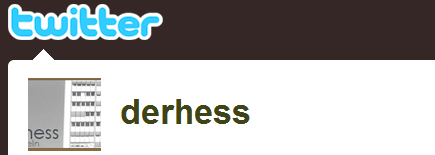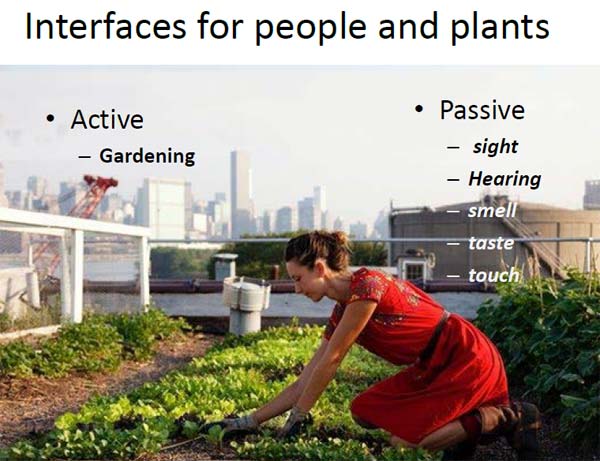Archive
Links for plant-based Bio Art and Gardening
One week ago I published a blog post about links and places for Physical Computing in Germany. Today I decided to do the same for plant-based stuff. Hopefully, I get more organized in the future and maybe helpful for some others, too. Please feel free to add some others resources as comment. ThX!
DIY BIO (ART) Community
- DIY BIO | Blog
- OpenPCR | BioPrinter | Blog - Cellular Biology
- BioCurious - Hackspace for BioHacking
- Hackteria.org - DIY Bio Hacking
- BioTinkering - DIY Bio Hacking in Berlin
- ALOTOF - A Laboratory On The Open Fields of Art, Gardening, etc.
- OpenGreens - Knowledgebase and meeting point between art and nature
- BCL Journal - Research Framework for art and nature
- Art Plantae Today (relation between art and biology - paper - Questia link)
- O'Reilly BioCoder (article) - DIY/BIO Newsletter
Book review: The Social Life of Small Urban Spaces
.
In relation of my masterthesis and my interests in location-based mobile apps I read the book "The Social Life of Small Urban Spaces" by William H. Whyte. The book is quite old and the first edition was published around 1980. My research focus was in particular in exploring how people behave in urban environments WITHOUT mobile communication technology. I am digital native, so I have no real idea how the world was before mobiles, walkmans and Game Boys. The book delivers a really good insight how people meet and behave in small urban places (plazas and small parks). Furthermore, it describes the vital elements of these plazas. How they correlate to each other and how to design them. The target groups of this book are more or less architects, city planners and landscape architects. But even for urban activists and street artists the book has some value. The elements of small urban spaces haven't changed much since 1980. Almost each element has his own chapter:
Read more...
Falling in love with REST APIs and Backbone
How I mentioned in my previous post, there is some stuff that I really like about developing with JavaScript. Especially, working with REST APIs and Backbone is so simple. There just a view steps to do. In my case I have chosen the Qype Rest API. Create your model and define your properties you want to work with.
Nature – Documents of Contemporary Art (Plants interfaces)
During my research on Human Plant Interfaces I stumbled on the book "Nature" published by MIT Press and the Whitechapel Gallery. It is a collection of texts (essays, interviews, etc.) about the Contemporary Art history related to the topic Nature. This book is a nice inspiration source for every artist, scientist, developer who is dealing with nature. In my special case I was mainly interested into plants. You can read a short summary of my readings for my master thesis in Human Plant Interfaces: Read more...
Masterthesis: Human Plant Interfaces
Since October I am working on my masterthesis about Human Plant Interfaces. I chose this topic because plants are not well researched in an interface design context. Plants are vital for our life but they are very rare in urban environments. In the context of my thesis I will research plants under the point of view of an interface designer. My objective is to find ways for integrating plants more in our daily life. The results of the research will be shared on my blog. I am happy about every feedback and open minded for discussions. At the university I showed a small presentation of my topic, it will give you an idea what I am planning to do.
My most important Twitter Messages #15
New place – new people – new projects
More than one year ago I moved from Linz to Berlin. I have never regretted it. I had and still have many friends here, for skating the city is just great, a lot of things are going on here, especially in media art and of course more than enough party. So it's definitely enough for not getting bored.
During last 13- 14 month I got involved in some projects with friends and new people. In this blog post I give a short overview of these activities.
Get in touch with JavaScript

Some time passed since this Adobe public relation dilemma about Flex and Flash happened. Honestly, it hit me very hard. Exactly at this time, I was diving deeper into the Flex 4 Component Framework and tried to adapt my new knowledge to Flex Mobile. After some failures and misunderstandings I was on a good way and I was convinced that the (new) Flex 4 Framework is a real step forward for developing User Interface. For this reason, I got a little bit mad about the whole discussion of HTML5 vs. Flex. I expected that HTML5 + CSS3 + JavaScript will come, but not so fast and powerful. However, I got a good opportunity and checked what it is all about this new hype of web technologies. As a Flex and Flash Develeoper the transition to this open standard development approach is not very difficult, except the tooling is like from another planet. I had the feeling that finding the right tooling is as difficult as finding the appropriate life partner. There doesn't exist an one simple solution for everything like Flash Builder environment. In my case I recommend for writing Code to use the IDE Webstorm, for debugging I am using Firebug for Firefox. Whatever everyone has his own preferences, so decide for yourself what is the best.



